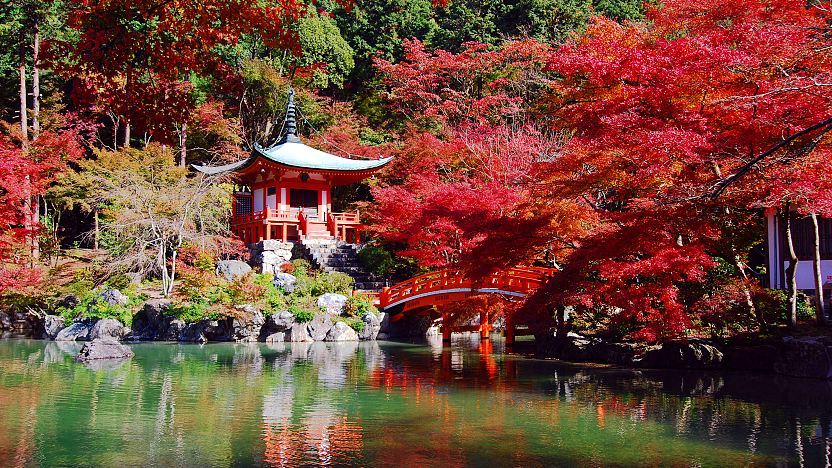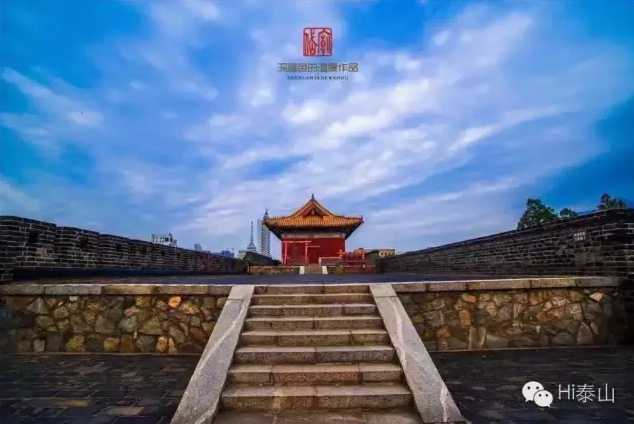A Pilgrim’s Guide to Dai Temple: History, Culture, and Serenity

An Essential Guide to Visiting Dai Temple
In This Guide
- An Essential Guide to Visiting Dai Temple
- The Rich History and Legends of Dai Temple
- Main Highlights: What You Absolutely Can’t Miss
- Planning Your Visit: A Practical Guide
- Tickets: Prices, Booking, and Tips
- How to Get There: A Complete Transportation Guide
- Local Cuisine and Accommodation Nearby
- Frequently Asked Questions
- Final Thoughts on Your Trip
Nestled in the heart of Tai’an, Dai Temple (泰安岱庙) stands as a testament to China’s rich cultural tapestry and storied history. As one of the most significant religious sites dedicated to the worship of Mount Tai, this temple is not just an architectural marvel; it is a living symbol of reverence that has attracted pilgrims and tourists alike for centuries.
A Glimpse into History
Constructed during the Han Dynasty (206 BCE – 220 CE), Dai Temple has undergone numerous renovations and expansions, evolving into a complex that blends traditional Chinese architectural styles with profound spiritual significance. The temple is dedicated to the worship of the deity of Mount Tai, an important symbol of power and tranquility in Chinese culture.

Dai Temple.
What to Expect
Visitors will be captivated by the intricate carvings, vibrant colors, and serene atmosphere that permeate the temple grounds. As you stroll through the courtyards, you’ll encounter ancient trees that have witnessed the passage of time and the many prayers offered by countless devotees. Each structure within the complex tells a story, from the majestic Hall of Heavenly Kings to the tranquil Hall of the Great Sage.
Planning Your Visit
To truly appreciate the beauty of Dai Temple, consider visiting during the early morning or late afternoon when the sunlight casts a warm glow over the intricate details of the architecture. Be prepared for a serene experience; the temple is a place of worship, and visitors are encouraged to respect local customs, such as removing their shoes before entering sacred spaces.

Dai Temple.
Whether you are a history buff, a spiritual seeker, or simply looking to experience the tranquility of a different culture, Dai Temple promises an enriching journey into the heart of Chinese spirituality and artistry.
The Rich History and Legends of Dai Temple
Unveiling the Rich History and Legends of Dai Temple
Nestled at the foot of Mount Tai, one of China’s Five Great Mountains, Dai Temple (泰安岱庙) is not just a temple; it is a living testament to the intricate tapestry of Chinese history and culture. Its storied past is interwoven with the spiritual heritage of Taoism and Confucianism, drawing visitors from around the globe who seek to explore its ancient halls and tranquil gardens.

Dai Temple.
A Historical Overview
The origins of Dai Temple date back to the Han Dynasty (206 BC – 220 AD), although its prominence surged during the Tang (618–907 AD) and Song (960–1279 AD) dynasties. Initially constructed as a place of worship dedicated to Mount Tai, the temple served as a site for emperors to perform rituals seeking blessings for their reign and the prosperity of the nation. Over the centuries, the temple has witnessed countless dynasties rise and fall, each leaving its mark through renovations and expansions.
The temple complex is an architectural marvel, showcasing a harmonious blend of traditional Chinese design elements. With over 100 structures, including halls, pavilions, and altars, Dai Temple is a prime example of ancient Chinese engineering. The Yuhuang Hall, dedicated to the Jade Emperor, stands as the centerpiece, adorned with exquisite carvings and intricate murals that narrate stories of Chinese mythology.

Dai Temple.
Legends and Myths
Beyond its historical significance, Dai Temple is steeped in legends that add a mystical allure to its atmosphere. One of the most famous tales speaks of the legendary sage, Confucius, who is said to have visited Mount Tai, where he meditated and sought enlightenment. Local lore claims that during his time, he was granted a vision of wisdom that would shape his teachings. As a result, the temple became a pilgrimage site for Confucian scholars and followers, solidifying its status as a bastion of learning and virtue.
Another enchanting legend involves the Dragon King, a deity associated with rain and water. According to folklore, the Dragon King descended from the heavens to bless Mount Tai with life-giving rain after observing the struggles of local farmers. In gratitude, the villagers built a shrine within Dai Temple, where they continue to honor him to this day, asking for his blessings during dry seasons.

Dai Temple.
Cultural Significance
Dai Temple is not merely a historical site; it is a vibrant center of cultural activities and religious practices. Each year, thousands flock to the temple to partake in traditional festivals, such as the Taishan Mountain Pilgrimage, which celebrates the rich heritage of the region. The temple also serves as a venue for various cultural performances, showcasing traditional music, dance, and art that reflect the deep spiritual roots of Chinese civilization.
Visiting Dai Temple Today
As you stroll through the serene pathways of Dai Temple, you will be enveloped by the fragrance of incense and the soft murmur of prayers. The temple stands as a reminder of the enduring legacy of Chinese culture and spirituality, inviting visitors to connect with the past while fostering a sense of peace and contemplation. Whether you are drawn by history, legends, or simply the beauty of the architecture, a visit to Dai Temple promises to enrich your understanding of China’s profound cultural heritage.
Embark on this journey through time, and let the whispers of history guide your exploration of Dai Temple’s sacred grounds.

Dai Temple.
Main Highlights: What You Absolutely Can’t Miss
Discovering the Unmissable Highlights of Dai Temple (泰安岱庙)
When visiting the Dai Temple in Tai’an, you are stepping into a realm steeped in history and spirituality. This ancient temple complex, dedicated to the worship of Mount Tai, is not only a significant religious site but also a cultural treasure that offers a profound glimpse into Chinese traditions. Here are the must-see highlights you simply cannot miss during your visit:
1. The Grand Entrance Gate (大门)
As you approach Dai Temple, the impressive entrance gate welcomes you to a world of serenity and reverence. Adorned with intricate carvings and traditional Chinese architectural elements, this gateway sets the tone for your exploration. Take a moment to appreciate the craftsmanship and the symbolic meanings behind the designs.
2. Hall of Heavenly Kings (天王殿)
Upon entering the temple complex, the Hall of Heavenly Kings is an immediate highlight. This grand hall houses stunning statues of the Four Heavenly Kings, who are believed to protect the Buddhist teachings. The vibrant colors and intricate details of the sculptures make this a perfect spot for photography and reflection.

Dai Temple.
3. The Main Shrine (主殿)
The heart of the Dai Temple is undoubtedly the Main Shrine, where the revered statue of the God of Mount Tai resides. This shrine is not only architecturally magnificent, but it is also a place of deep spiritual significance. Visitors often leave offerings and prayers, creating an atmosphere of tranquility and devotion. Be sure to observe the rituals performed by local worshippers, as this provides insight into the temple’s cultural practices.
4. The Pavilion of the Nine Dragons (九龙阁)
One of the most iconic structures within the temple grounds, the Pavilion of the Nine Dragons is a visual feast. Its unique design features nine dragon sculptures, symbolizing power and strength in Chinese folklore. The pavilion offers a stunning view of the surrounding landscape, making it an ideal spot to pause and soak in the natural beauty.

Dai Temple.
5. The Immortal’s Bridge (仙人桥)
Connecting the various sections of the temple, the Immortal’s Bridge is not just a functional pathway; it is also a work of art. This stone bridge is steeped in legend and is a favorite among visitors for its scenic views. Walking across it, you may find yourself reflecting on the tales of ancient scholars and poets who once traversed the same path.
6. The Scenic Gardens
Surrounding the temple complex are beautifully landscaped gardens that provide a peaceful retreat from the hustle and bustle of daily life. Tend to your senses with the fragrant flowers and the sound of rustling leaves. These gardens are perfect for a leisurely stroll or a quiet moment of meditation.
7. Cultural Exhibits and Artifacts
Don’t miss the small museum located within the temple grounds that showcases artifacts and historical exhibits related to the worship of Mount Tai. Here, you can deepen your understanding of the temple’s significance and its role in Chinese culture throughout history.

Dai Temple.
8. Local Cuisine and Souvenirs
After exploring the temple, indulge in the local culinary delights. Street vendors and nearby restaurants offer traditional dishes that reflect the region’s flavors. Consider picking up a unique souvenir from the local shops, perhaps a piece of art inspired by the temple’s architecture or a handcrafted item that captures the essence of Tai’an.
Final Thoughts
A visit to Dai Temple is not just a journey through a historical site; it is an immersion into the rich tapestry of Chinese spirituality and culture. Whether you are drawn by the architectural beauty, the tranquil gardens, or the spiritual practices, you will undoubtedly leave with a deeper appreciation for this remarkable destination. Make sure to take your time, absorb the atmosphere, and honor the traditions that have flourished within these sacred walls for centuries.

Dai Temple.
Planning Your Visit: A Practical Guide
Essential Information for Your Visit to Dai Temple (泰安岱庙)
Overview
Dai Temple, located at the foot of Mount Tai in Taian, Shandong Province, is one of the most significant cultural and religious sites in China. Renowned for its stunning architecture and profound historical significance, the temple complex serves as a homage to Confucianism, Taoism, and Buddhism. It attracts visitors not only for its spiritual importance but also for the breathtaking views and rich history it offers.
Getting There
- Location: Dai Temple is situated in the city of Taian, easily accessible from major cities like Jinan and Beijing.
- Public Transport:
- Train: Take a high-speed train to Taian Railway Station, which is well-connected to major cities. From there, you can take a taxi or local bus to the temple.
- Bus: Long-distance buses also run frequently to Taian from various cities.
- Car: If driving, follow the G3 Beijing-Hong Kong-Macau Expressway, which connects to Taian.
Best Time to Visit
- Seasons: The temple is open year-round, but spring (April to June) and autumn (September to November) are particularly pleasant, with mild weather and fewer tourists.
- Time of Day: Early mornings or late afternoons offer a tranquil atmosphere and beautiful lighting for photography.

Dai Temple.
Opening Hours
- Daily: 7:00 AM – 6:00 PM
- Recommended Duration: Plan to spend about 1-2 hours exploring the temple complex and its surrounding gardens.
Admission Fees
- Ticket Price: As of the latest updates, the entrance fee is approximately 100 RMB, with discounts available for students and seniors. Always check for current rates before your visit.
What to Expect
- Architecture: Marvel at the intricate carvings, vibrant colors, and ancient structures that reflect traditional Chinese architectural styles.
- Cultural Significance: Engage with the spiritual atmosphere and observe local worshippers. Be respectful of the rituals and practices you may witness.
- Guided Tours: Consider joining a guided tour to gain deeper insights into the history and significance of the temple and its artifacts.

Dai Temple.
Dress Code
- Attire: As a place of worship, modest clothing is encouraged. Wearing long sleeves and pants is advisable. Comfortable shoes are also recommended, as you will be doing a fair amount of walking.
Nearby Attractions
- Mount Tai: A UNESCO World Heritage Site, it’s a must-see for its stunning natural beauty and historical significance. Hiking trails lead to the summit, offering spectacular views.
- Taian City: Explore the local markets, shops, and restaurants to experience the local culture and cuisine.
Additional Tips
- Photography: Capture the beauty of the temple, but be mindful of signs indicating where photography is restricted.
- Language: While signage may be in both Chinese and English, learning a few basic Mandarin phrases can enhance your experience and interactions with locals.
- Stay Hydrated: Bring water, especially if visiting in the warmer months, as you’ll be walking and exploring the temple grounds extensively.
Conclusion
A visit to Dai Temple promises an enriching experience steeped in history and culture. Preparing in advance will ensure that you make the most of your journey to this sacred site, allowing you to appreciate its beauty and significance fully. Whether you’re a history buff, a culture enthusiast, or simply seeking a serene escape, Dai Temple is a destination that should not be missed.
Tickets: Prices, Booking, and Tips
When planning your visit to Dai Temple (泰安岱庙), a site steeped in Chinese history and spirituality, understanding the ticketing process will enhance your experience. Here’s a comprehensive guide to ticket prices, booking options, and essential tips for your journey.
Ticket Prices
- General Admission: Entry to Dai Temple is typically priced at ¥50 (approximately $7), making it an affordable option for both cultural enthusiasts and casual tourists.
- Discounted Tickets: Reduced fare tickets are available for students and seniors, generally costing around ¥25 (about $3.50). Be sure to carry appropriate identification to benefit from these discounts.
Booking Options
- On-Site Purchase: Tickets can be purchased directly at the temple entrance. This allows for flexibility in your schedule, as you can decide to visit spontaneously.
- Online Booking: For those who prefer to plan ahead, tickets can often be booked through various travel platforms. This is advisable during peak tourist seasons, ensuring you secure your entry without long waits.
Visiting Hours
Dai Temple is open daily from 7:00 AM to 6:00 PM. To fully appreciate the temple’s serene atmosphere, consider visiting during the early morning or late afternoon when the lighting enhances its beauty, and the crowds are thinner.
Tips for Your Visit
- Dress Code: As a place of worship, it’s respectful to dress modestly. Ensure your attire covers your shoulders and knees.
- Photography: While photography is generally allowed, be mindful of the worshippers and avoid capturing moments that may intrude on their spiritual practices.
- Guided Tours: If you wish to delve deeper into the temple’s history and significance, consider joining a guided tour. Local guides can provide invaluable insights that enrich your understanding of the site.
- Nearby Attractions: After your visit, explore the surrounding area. Dai Temple is conveniently located near several other historical sites, making it easy to plan a full day of exploration.
Conclusion
A visit to Dai Temple is not just an opportunity to witness its architectural splendor, but also a chance to immerse yourself in the rich cultural tapestry of China. By following these tips and understanding the ticketing process, you’ll be well-prepared to enjoy this remarkable destination.
How to Get There: A Complete Transportation Guide
Getting to Dai Temple (泰安岱庙): A Comprehensive Transportation Guide
Visiting Dai Temple, an iconic representation of Chinese history and culture, is an enriching experience that can be easily accessed through various transportation methods. Below, we outline the best ways to reach this historical site, ensuring that your journey is as smooth as possible.
1. Arriving by Air
The nearest major airport to Dai Temple is Jinan Yaoqiang International Airport (TNA), located approximately 130 kilometers away from Tai’an.
- International Flights: Depending on your departure city, you may find direct flights to Jinan or have to connect through major hubs such as Beijing or Shanghai.
- Domestic Flights: If you’re traveling within China, you can fly directly into Jinan from cities like Beijing, Shanghai, or Guangzhou.
Airport Transfer Options:
– Taxi: Taxis are available outside the airport terminals, and a ride to Tai’an will take around 1.5 to 2 hours.
– Airport Shuttle: Look for shuttle services that may provide direct transport to Tai’an. This option is often more economical but may take longer due to multiple stops.
– Train: For a more scenic route, consider taking a train from Jinan to Tai’an, which offers regular services and takes about 1 hour.
2. Traveling by Train
Tai’an is well-connected by train, making it easy to reach from various cities across China.
- High-Speed Trains: The Tai’an Railway Station is a key stop on the Beijing-Shanghai High-Speed Railway. High-speed trains from Beijing take approximately 2 hours, while those from Shanghai take around 4 hours.
- Regular Trains: Slower trains are also available from major cities, such as Jinan and Qufu. These may take longer but can be a more budget-friendly option.
From Tai’an Railway Station:
– Public Transport: Upon arrival, you can take a local bus or taxi to reach Dai Temple, which is only about 5 kilometers away.
– Walking: If you’re feeling adventurous, the temple is about a 30-minute walk from the station, allowing you to enjoy the local scenery.
3. Buses and Local Transport
Should you choose to travel by bus, Tai’an’s public transport network is comprehensive and user-friendly.
- Long-Distance Buses: Various bus services connect Tai’an with nearby cities and provinces. The main bus station is located near the railway station, making transfers easy.
- Local Buses: Once in Tai’an, take a local bus to Dai Temple. Buses frequently run from the city center to the temple area.
4. Driving
If you prefer the flexibility of your own vehicle, renting a car is a viable option:
- Car Rentals: Several car rental services operate in Jinan and Tai’an. Ensure you have an international driving permit and familiarize yourself with local traffic laws.
- Parking: Dai Temple has designated parking areas nearby, making it convenient for visitors who drive.
5. Guided Tours
For those who want a hassle-free experience, consider booking a guided tour that includes transportation:
- Day Tours: Many operators offer day trips from Jinan or other cities, which typically cover transportation, entrance fees, and a local guide to enhance your experience.
- Private Tours: If you prefer a personalized experience, private tours can be arranged, allowing you to explore at your own pace.
Tips for Your Journey
- Timing: Plan your visit early in the morning or late afternoon to avoid crowds and experience the temple in a more tranquil atmosphere.
- Dress Code: When visiting Dai Temple, dress modestly and respectfully. Wearing long sleeves and trousers is recommended.
- Language: While some locals may speak English, it’s helpful to have a translation app or a phrasebook handy, especially when navigating public transport.
By following this transportation guide, you can ensure a seamless journey to Dai Temple, allowing you to immerse yourself in its rich history and cultural significance. Enjoy your visit!
Local Cuisine and Accommodation Nearby
When visiting Dai Temple (泰安岱庙), immersing yourself in the local cuisine and exploring nearby accommodations can greatly enhance your experience. This historical site not only offers a glimpse into China’s rich cultural heritage but also places you in the heart of a vibrant community filled with flavors and hospitality.
Culinary Delights to Savor
While in the vicinity of Dai Temple, you’ll discover a variety of dining options that celebrate local flavors and traditional Chinese cuisine. Here are some recommendations:
-
Crab House Restaurant
Located just a stone’s throw away, this highly-rated seafood spot specializes in fresh, delectable crab dishes. The casual atmosphere makes it perfect for families and groups looking to enjoy a hearty meal. -
Laylow Phu Quoc
A short walk from the temple, this trendy bar and restaurant offers a fusion of European and Vietnamese flavors. With vegan options available, it caters to diverse dietary preferences and is known for its vibrant cocktails. -
Sushi Ngư Restaurant
If you’re in the mood for Japanese cuisine, this restaurant is a must-visit. Renowned for its sushi and seafood, it provides a delightful dining experience just moments from the temple. -
Saigon Pho
For a taste of authentic Vietnamese cuisine, head to Saigon Pho. This cozy spot offers a variety of pho dishes and other local favorites, making it a great place to experience the region’s culinary offerings.
Where to Stay
After a day of exploring the temple and indulging in local delicacies, you’ll want a comfortable place to rest. Here are some excellent accommodation options nearby:
-
Breezy Resort
Nestled within a lush garden, this resort offers a tranquil retreat with modern amenities. It’s an excellent choice for travelers looking for a peaceful getaway while still being close to the temple. -
Dai Temple Villa
This charming villa provides a unique experience, blending traditional architecture with modern comforts. Guests can enjoy beautiful views of the surrounding area, making it an ideal spot for relaxation. -
Sunset Beach Hotel
Located a short distance from the temple, this hotel boasts stunning sunset views and easy access to local attractions. Its friendly staff and comfortable rooms ensure a pleasant stay. -
Phu Quoc Eco Lodge
For those who prefer a more rustic experience, the Phu Quoc Eco Lodge offers cozy accommodations that emphasize sustainability. Surrounded by natural beauty, it’s perfect for eco-conscious travelers.
Final Thoughts
Dai Temple is not just a site of historical significance; it’s also a gateway to experiencing the rich culinary traditions of the region. Whether you’re indulging in fresh seafood or savoring authentic Vietnamese dishes, the local cuisine will undoubtedly enhance your visit. Pair these delightful meals with the comfort of nearby accommodations, and you’ll create lasting memories of your time exploring this remarkable part of China.
Frequently Asked Questions
Frequently Asked Questions about Dai Temple (泰安岱庙)
1. What is the historical significance of Dai Temple?
Dai Temple, also known as Tai’an Dai Miao, is a crucial cultural and historical site dedicated to the worship of Mount Tai, a sacred mountain in Chinese culture. The temple dates back to the Han Dynasty and has served as a place of pilgrimage for emperors and common people alike, symbolizing the deep-rooted connection between nature and spirituality in Chinese tradition.
2. What are the opening hours for Dai Temple?
Dai Temple is open daily from 7:00 AM to 6:00 PM. It is advisable to visit in the morning or late afternoon for a more serene experience, as temperatures can rise during midday.
3. How much time should I allocate for my visit?
You can plan to spend about an hour at Dai Temple. This allows you enough time to explore its stunning architecture, take photographs, and absorb the tranquil atmosphere.
4. What should I wear when visiting Dai Temple?
Visitors are encouraged to dress respectfully. It is advisable to wear long clothing that covers your shoulders and knees, as this is a customary practice in many Chinese temples.
5. Is there an entrance fee?
There is no entrance fee to visit Dai Temple; however, donations to support the maintenance and preservation of the temple are appreciated.
6. Are there any specific rules or etiquette I should follow while inside the temple?
Yes, when visiting Dai Temple, please observe the following etiquette:
– Remove your shoes before entering the main prayer hall.
– Keep noise to a minimum to maintain the peaceful atmosphere.
– Avoid touching any religious artifacts or offerings unless permitted.
7. Can I take photographs inside the temple?
Photography is generally allowed, but be mindful of areas where it may be restricted, especially during prayer times. Always respect the privacy of worshippers and avoid using flash.
8. What other attractions are nearby?
Dai Temple is conveniently located near several other attractions, including the scenic Mount Tai, the ancient city of Tai’an, and various local markets. You can easily explore these sites on foot or by renting a bike for a more adventurous experience.
Final Thoughts on Your Trip
As your journey to Dai Temple (泰安岱庙) draws to a close, it’s clear that this sacred site is more than just a historical landmark; it’s a testament to the enduring spirit of Chinese culture and spirituality. Nestled at the foot of Mount Tai, one of China’s most revered mountains, Dai Temple serves as a gateway not only to the past but also to the soul of the Chinese people.
Reflecting on Your Experience
Visiting Dai Temple offers you a unique glimpse into the intricate tapestry of Chinese history. The temple’s architecture, with its vibrant colors and intricate carvings, invites you to ponder centuries of devotion and artistry. The serene atmosphere, often punctuated by the soft sound of prayer bells and the fragrant aroma of incense, transports you to a realm of peace and contemplation.
Key Takeaways
- Cultural Significance: This temple is a living testament to the rich traditions of Confucianism, Taoism, and Buddhism.
- Architectural Beauty: The grandeur of the structures and the stunning gardens surrounding the temple create a visual feast that is both inspiring and humbling.
- Connection with Nature: The proximity to Mount Tai enhances the experience, reminding you of the harmonious relationship between spirituality and nature in Chinese culture.
A Call to Remember
As you depart, take a moment to reflect on the lessons of resilience, harmony, and respect for both culture and nature that Dai Temple embodies. Whether you wandered through its hallowed halls, marveled at the intricate details of its architecture, or simply soaked in the tranquil atmosphere, these experiences will linger long after your visit.
Stay Curious
Your exploration of Dai Temple is just one chapter in the vast narrative of China. Consider continuing your journey through this remarkable country, where every destination has its own story to tell. May your travels inspire a deeper appreciation for the rich history and vibrant culture that define this ancient land. Safe travels!